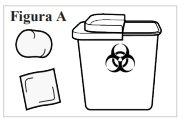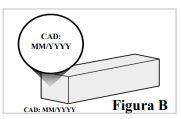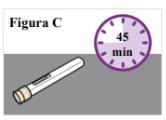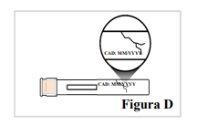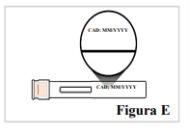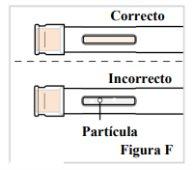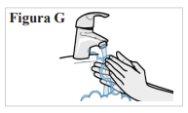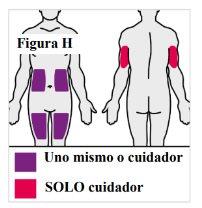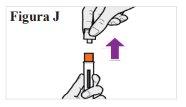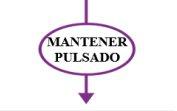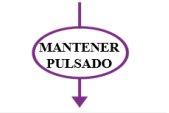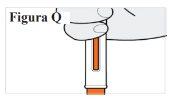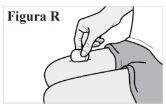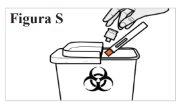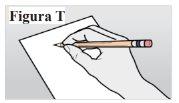
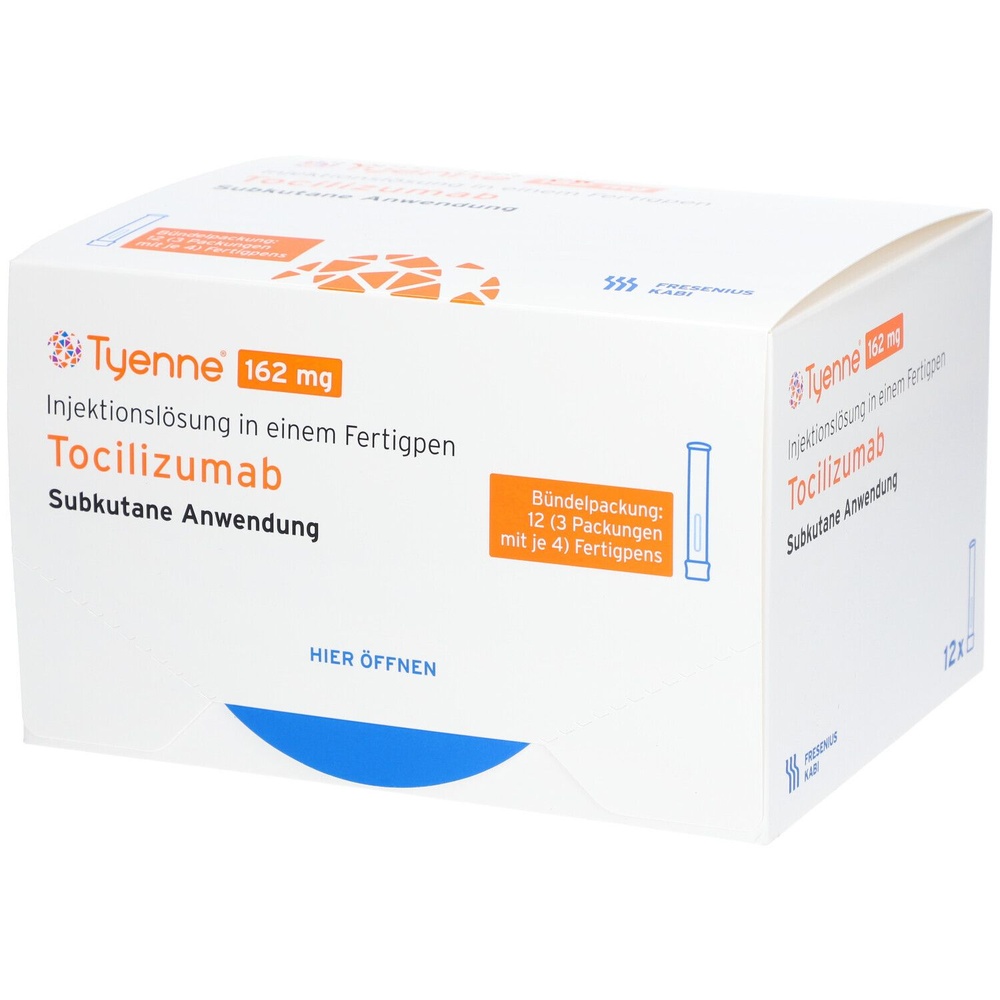
ТІЄННЕ 162 мг РОЗЧИН ДЛЯ ІН'ЄКЦІЙ У ПЕРЕДНАПОВНЕНІЙ ШПРИЦ-РУЧЦІ


Інструкція із застосування ТІЄННЕ 162 мг РОЗЧИН ДЛЯ ІН'ЄКЦІЙ У ПЕРЕДНАПОВНЕНІЙ ШПРИЦ-РУЧЦІ
Вступ
Опис: інформація для користувача
Tyenne 162 мг розчин для ін'єкцій у попередньо наповненому шприці
тоцілізумаб
Цей лікарський засіб підлягає додатковому моніторингу, що прискорить виявлення нової інформації про його безпеку. Ви можете допомогти, повідомивши про будь-які побічні ефекти, які ви могли б мати. Остання частина розділу 4 містить інформацію про те, як повідомляти про ці побічні ефекти.
Прочитайте уважно весь опис перед тим, як почати використовувати цей лікарський засіб, оскільки він містить важливу інформацію для вас.
- Збережіть цей опис, оскільки вам може знадобитися знову його прочитати.
- Якщо у вас є якісь питання, проконсультуйтеся з вашим лікарем, фармацевтом або медсестрою.
- Цей лікарський засіб призначений тільки вам, і не слід давати його іншим людям, навіть якщо вони мають相同ні симптоми, оскільки це може нашкодити їм.
- Якщо ви відчуваєте побічні ефекти, проконсультуйтеся з вашим лікарем, фармацевтом або медсестрою, навіть якщо це побічні ефекти, які не вказані в цьому описі. Див. розділ 4.
Окрім цього опису, вам буде видана Карта інформації для пацієнта, яка містить важливу інформацію про безпеку, яку ви повинні знати перед тим, як отримати та під час лікування Tyenne.
Зміст опису
- Що таке Tyenne і для чого він використовується
- Що потрібно знати перед тим, як почати використовувати Tyenne
- Як використовувати Tyenne
- Можливі побічні ефекти
- Збереження Tyenne
- Зміст упаковки та додаткова інформація
1. Що таке Tyenne і для чого він використовується
Tyenne містить активну речовину під назвою тоцілізумаб, яка є білком, отриманим з імунних клітин (моноклональне антитіло), що блокує дію певного типу білка (цитокину) під назвою інтерлейкін-6. Цей білок залучений до запальних процесів в організмі, і блокуючи його, можна зменшити запалення. Tyenne призначений для лікування:
- дорослих з активною ревматоїдною артритом (РА) середньої або тяжкої форми, яка є аутоімунною хворобою, якщо попередні методи лікування не були ефективними.
- дорослих з активною ревматоїдною артритом (РА) тяжкої форми, активною та прогресуючою, які не були раніше лікувані метотрексатом.
Tyenne допомагає зменшити симптоми РА, такі як біль і набухання в суглобах, і також може покращити вашу здатність виконувати щоденні завдання. Tyenne довів свою ефективність у зменшенні прогресії пошкодження суглобів та кісток, викликаних хворобою, і покращенні вашої здатності виконувати щоденні завдання.
Tyenne зазвичай використовується в поєднанні з іншим лікарським засобом для лікування РА під назвою метотрексат. Однак Tyenne може бути призначений самостійно, якщо ваш лікар визначить, що метотрексат не підходить.
- дорослих з хворобою артерій, відомою як гігантоклітинний артеріїт (ГКА), викликаним запаленням найбільших артерій організму, особливо тих, які постачають кров до голови та шиї. Симптоми можуть включати головний біль, втому (знесиління) та біль у щелепі. Ефекти можуть включати інсульт та сліпоту.
Tyenne може зменшити біль та набухання артерій та вен голови, шиї та рук.
ГКА часто лікується лікарськими засобами, відомими як стероїди. Зазвичай вони є ефективними, але можуть мати побічні ефекти при тривалому застосуванні у високих дозах. Зменшення дози стероїдів також може призвести до загострення ГКА. Додавання Tyenne до лікування дозволяє зменшити тривалість застосування стероїдів, при цьому контролюючи хворобу.
- дітей та підлітків у віці 12 років та старших з активною ювенільною ідіопатичною артритом (ЮІА) системного типу, який є запальним захворюванням, що викликає біль та набухання в одному або декількох суглобах, а також лихоманку та висип.
Tyenne використовується для покращення симптомів ЮІА. Він може бути призначений у поєднанні з метотрексатом або самостійно.
- дітей та підлітків у віці 12 років та старших з активною ювенільною ідіопатичною артритом (ЮІА) поліартикулярного типу. Це запальне захворювання, яке викликає біль та набухання в одному або декількох суглобах.
Tyenne використовується для покращення симптомів ЮІА. Він може бути призначений у поєднанні з метотрексатом або самостійно.
2. Що потрібно знати перед тим, як почати використовувати Tyenne
Tyenne не буде призначений
- Якщо ви алергічнідо тоцілізумабу або до будь-якого іншого компонента цього лікарського засобу (перелічених у розділі 6).
- Якщо у вас є активна тяжка інфекція.
Якщо ви відчуваєте щось із цього, проконсультуйтеся з лікарем або медсестрою, який вводить перфузію.
Попередження та застереження
Проконсультуйтеся з лікарем або медсестрою перед тим, як почати приймати Tyenne.
- Якщо ви відчуваєте алергічні реакціїтипу відчуття стиснення грудної клітки, свистіння, головокружіння або сильного головокружіння, набухання губ або висип під час або після перфузії, повідомте своєму лікарю негайно.
- Якщо у вас є будь-який тип інфекції, короткочасної або тривалої, або якщо ви часто захворюєте на інфекції. Повідомте своєму лікарю негайно, якщо ви відчуваєте себе погано. Tyenne може зменшити здатність вашого організму реагувати на інфекції та зробити існуючу інфекцію гіршою або збільшити ймовірність нового захворювання.
- Якщо ви мали туберкульоз, повідомте своєму лікарю. Ваш лікар перевірить ознаки та симптоми туберкульозу перед тим, як почати лікування Tyenne. Повідомте своєму лікарю негайно, якщо симптоми туберкульозу (тривалий кашель, втрату ваги, загальне нездоров'я, субфебрилітет), або будь-яка інша інфекція з'являються під час або після лікування.
- Якщо ви мали висипний кишковий або дивертикуліт, повідомте своєму лікарю. Симптоми можуть включати біль у животі та зміни у кишкових звичаях з лихоманкою.
- Якщо у вас є хвороба печінки, повідомте своєму лікарю. Перед тим, як використовувати Tyenne, ваш лікар проведе аналіз крові для вимірювання функції печінки.
- Якщо будь-який пацієнт був щеплений недавно(дорослий або дитина) або планує щеплення, повідомте своєму лікарю. Усі пацієнти, особливо діти, повинні бути вакциновані згідно з календарем вакцинації перед тим, як почати лікування Tyenne, якщо не потрібно термінове лікування. Деякі типи вакцин не повинні вводитися під час лікування Tyenne.
- Якщо у вас є рак, повідомте своєму лікарю. Ваш лікар повинен вирішити, чи можете ви продовжувати лікування Tyenne.
- Якщо у вас є фактори ризику серцево-судинних захворювань, такі як підвищення артеріального тиску,
високі рівні холестерину, повідомте своєму лікарю. Ці фактори повинні бути контролюються під час лікування Tyenne.
- Якщо у вас є проблеми з нирками середньої або тяжкої форми, ваш лікар буде спостерігати за вами.
- Якщо у вас є тривалі головні болі.
Ваш лікар проведе аналіз крові перед тим, як ви почнете приймати Tyenne, та під час лікування, щоб визначити, чи у вас є низький рівень лейкоцитів у крові, низький рівень тромбоцитів або підвищення рівня ферментів печінки.
Діти та підлітки
Не рекомендується використання Tyenne у дітей молодших 2 років.
Повідомте своєму лікарю, якщо дитина має анамнез синдрому активації макрофагів, (активація та неконтрольоване розмноження певних клітин крові). Ваш лікар вирішить, чи може дитина продовжувати лікування Tyenne.
Інші лікарські засоби та Tyenne
Повідомте своєму лікарю, якщо ви приймаєте, приймали недавно або плануєте приймати будь-який інший лікарський засіб (або якщо ваша дитина приймає його, якщо вона є пацієнтом). Це включає лікарські засоби, придбані без рецепта. Tyenne може впливати на дію деяких лікарських засобів, і може знадобитися корекція дози. Повідомте своєму лікарю, якщо ви використовуєте лікарські засоби, які містять будь-які з цих активних речовин:
- метилпреднізолон, дексаметазон, які використовуються для зменшення запалення,
- сімвастатин або аторвастатин, які використовуються для зменшення рівня холестерину,
- антагоністи кальцієвих каналів, такі як амлодипін, який використовується для лікування підвищення артеріального тиску,
- теофілін, який використовується для лікування астми,
- варфарин або фенпрокумон, які використовуються як антикоагулянти,
- фенитоїн, який використовується для лікування судом,
- циклоспорин, який використовується для трансплантації органів як імунодепресант,
- бензодіазепіни, такі як темазепам, який використовується для заспокоєння тривоги.
Щодо вакцин, див. попередню секцію попереджень.
Через відсутність клінічного досвіду не рекомендується використання Tyenne з іншими біологічними лікарськими засобами, які використовуються для лікування РА, ЮІА або ЮІП.
Вагітність та лактація
Tyenne не повинен використовуватися під час вагітності, якщо тільки це не абсолютно необхідно. Поговоріть зі своїм лікарем, якщо ви вагітні, думаєте, що можете бути вагітною, або плануєте завагітніти.
Жінки репродуктивного віку повинні використовувати ефективні методи контрацепції під час та до 3 місяців після закінчення лікування.
Перервайте годування грудьми, якщо починаєте лікування Tyenne, та проконсультуйтеся з лікарем. Перед тим, як відновити годування грудьми, повинні пройти принаймні 3 місяці з моменту останнього лікування Tyenne. Не відомо, чи Tyenne проникає в грудне молоко.
Дані, доступні на даний момент, не свідчать про те, що це лікування має будь-який вплив на фертильність.
Водіння транспортних засобів та використання машин
Цей лікарський засіб може викликати головокружіння, якщо ви відчуваєте себе головокружіння, не водьте транспортні засоби та не використовуйте машини.
Tyenne містить натрій
Цей лікарський засіб містить 0,24 мг натрію (основного компонента кухонної солі) в кожному мл. Це становить 0,012% від максимальної добової норми споживання натрію, рекомендованої для дорослих. Однак Tyenne розбавляється у розчині для перфузії хлориду натрію 9 мг/мл (0,9%) або 4,5 мг/мл (0,45%). Це повинно бути враховано у пацієнтів з дієтою, контрольованою за вмістом натрію.
3. Як використовувати Tyenne
Слідуйте точно інструкціям щодо застосування цього лікарського засобу, вказаним вашим лікарем, фармацевтом або медсестрою. У разі сумнівів проконсультуйтеся знову з вашим лікарем, фармацевтом або медсестрою.
Лікування повинно бути розпочато кваліфікованим медичним працівником, який має досвід діагностики та лікування РА, ЮІА, ЮІП або ГКА.
Дорослі з РА або ГКА
Рекомендована дозадля всіх дорослих з РА (ревматоїдна артрит) або ГКА (гігантоклітинний артеріїт) становить 162 мг (зміст попередньо наповненого шприця) один раз на тиждень.
Підлітки з ЮІА (у віці 12 років та старших)
Звичайна доза Tyenne залежить від ваги пацієнта.
- Якщо пацієнт важить менше 30 кг: доза становить 162 мг (зміст 1 попередньо наповненого шприця), один раз на 2 тижні.
- Якщо пацієнт важить 30 кг або більше: доза становить 162 мг (зміст 1 попередньо наповненого шприця), один раз на тиждень.
Підлітки з ЮІП (у віці 12 років та старших)
Звичайна доза Tyenne залежить від ваги пацієнта.
- Якщо пацієнт важить менше 30 кг: доза становить 162 мг (зміст 1 попередньо наповненого шприця), один раз на 3 тижні.
- Якщо пацієнт важить 30 кг або більше: доза становить 162 мг (зміст 1 попередньо наповненого шприця), один раз на 2 тижні.
Tyenne вводиться шляхом ін'єкції під шкіру (субкутанної). На початку ваш лікар або медсестра можуть вводити вам Tyenne. Однак ваш лікар може вирішити, що ви самі повинні вводити Tyenne. У цьому випадку ви отримаєте інформацію про те, як самостійно вводити Tyenne. Батьки та опікуни будуть навчені, як вводити Tyenne пацієнтам, які не можуть зробити це самостійно.
Поговоріть зі своїм лікарем, якщо у вас є будь-які питання щодо того, як ви або підліток, за яким ви доглядаєте, можете самостійно вводити ін'єкцію. У кінці цього опису ви знайдете «інструкції з застосування» у детальному описі.
Якщо ви використовуєте більше Tyenne, ніж потрібно
Оскільки Tyenne вводиться у попередньо наповненому шприці, малоймовірно, що ви отримаєте надмірну дозу. Однак, якщо вас турбує це, поговоріть зі своїм лікарем, фармацевтом або медсестрою.
Якщо дорослий з РА або ГКА або підліток з ЮІА пропустив або забув дозу
Це дуже важливо використовувати Tyenne точно так, як призначив ваш лікар. Збережіть запис про свою наступну дозу.
- Якщо ви забули свою тижневу дозу протягом 7 днів, прийміть свою дозу в наступний запланований день.
- Якщо ви забули свою двотижневу дозу протягом 7 днів, введіть дозу як тільки ви згадаєте про це та прийміть свою наступну дозу згідно з вашим оригінальним графіком.
- Якщо ви забули свою тижневу або двотижневу дозу протягом більш ніж 7 днів або не впевнені, коли вводити Tyenne, зателефонуйте своєму лікарю або фармацевту.
Якщо підліток з ЮІП пропустив або забув дозу
Це дуже важливо використовувати Tyenne точно так, як призначив лікар. Збережіть запис про свою наступну дозу.
- Якщо ви забули дозу протягом 7 днів, введіть дозу як тільки ви згадаєте про це та введіть свою наступну дозу згідно з вашим оригінальним графіком.
- Якщо ви забули дозу протягом 7 днів або більше, або не впевнені, коли вводити Tyenne, зателефонуйте лікарю або фармацевту.
Якщо ви припиняєте лікування Tyenne
Не слід припиняти лікування Tyenne без попередньої консультації з лікарем.
Якщо у вас є будь-які інші питання щодо використання цього лікарського засобу, поговоріть зі своїм лікарем, фармацевтом або медсестрою.
4. Можливі побічні ефекти
Як і всі лікарські засоби, цей лікарський засіб може викликати побічні ефекти, хоча не всі люди їх відчувають. Побічні ефекти можуть виникнути до трьох місяців після останньої дози Tyenne.
Можливі серйозні побічні ефекти: проконсультуйтеся з лікарем негайно.
Це часті: можуть впливати до 1 з 10 людей
Алергічні реакціїпід час або після ін'єкції:
- затруднення дихання, відчуття стиснення грудної клітки або головокружіння,
- висип, свербіж, кропив'янка, набухання губ, язика або обличчя.
Якщо ви відчуваєте будь-які з цих симптомів, поговоріть зі своїм лікарем негайно.
Ознаки серйозних інфекцій:
- лихоманка та озноб,
- пухирі у роті або на шкірі,
- біль у животі.
Ознаки та симптоми токсичності печінки:
Можуть впливати до 1 з 1000 людей
- втома,
- біль у животі,
- жовтяниця (жовтізація шкіри або очей).
Якщо ви помітили будь-які з цих симптомів, повідомте своєму лікарю негайно.
Дуже часті побічні ефекти:
Можуть впливати більше 1 з 10 людей
- інфекції верхніх дихальних шляхів, з типовими симптомами, такими як кашель, кон'юнктивіт, насморк, біль у горлі та головний біль,
- високі рівні жиру в крові (холестерину),
- реакції в місці ін'єкції.
Часті побічні ефекти:
Можуть впливати до 1 з 10 людей
- інфекція легенів (пневмонія),
- герпес (герпес зостер),
- лихоманка (герпес простий оральний), пухирі,
- інфекції шкіри (целюліт), іноді з лихоманкою та ознобом,
- висип та свербіж, кропив'янка,
- алергічні реакції (гіперчутливість),
- інфекція очей (кон'юнктивіт),
- головний біль, головокружіння, гіпертонія,
- висип у роті, біль у животі,
- затримка рідини (едем) у нижніх частинах ніг, збільшення ваги,
- кашель, коротке дихання,
- низький рівень лейкоцитів у аналізі крові (нейтропенія, лейкопенія),
- зміни функції печінки (підвищення трансаміназ),
- збільшення рівня білірубіну в крові,
- низький рівень фібриногену в крові (білка, залученої до згортання крові).
Рідкі побічні ефекти:
Можуть впливати до 1 з 100 людей
- дивертикуліт (лихоманка, нудота, діарея, запор, біль у животі),
- зони набухання та червоного кольору у роті,
- високі рівні жиру в крові (тригліцериди),
- виразки в шлунку,
- камені в нирках,
- гіпотиреоз.
Дуже рідкі побічні ефекти:
Можуть впливати до 1 з 1000 людей
- Синдром Стівенса-Джонсона (висип на шкірі, який може призвести до пухирів та сильної лущення шкіри),
- Смертельні алергічні реакції (анafilаксія [смертельна]),
- запалення печінки (гепатит), жовтяниця.
Дуже рідкі побічні ефекти:
Можуть впливати до 1 з 10 000 людей
- низький рівень лейкоцитів, червоних кров'яних тілець та тромбоцитів у аналізі крові,
- відмова печінки.
Додаткові побічні ефекти у дітей та підлітків з ЮІА або ЮІП
Побічні ефекти у дітей та підлітків з ЮІА або ЮІП загалом схожі з побічними ефектами у дорослих. Деякі побічні ефекти, які спостерігаються частіше у дітей та підлітків, включають запалення носа та горла, головний біль, нудоту та зниження рівня лейкоцитів.
Повідомлення про побічні ефекти
Якщо ви відчуваєте будь-який тип побічного ефекту, проконсультуйтеся з лікарем, фармацевтом або медсестрою, навіть якщо це побічні ефекти, які не вказані в цьому описі. Ви також можете повідомити про них безпосередньо через національну систему повідомлення, включену до Додатка V. Повідомляючи про побічні ефекти, ви можете допомогти надати більше інформації про безпеку цього лікарського засобу.
5. Збереження Tyenne
Тримайте цей лікарський засіб поза зоною досяжності дітей.
Не використовуйте цей лікарський засіб після закінчення терміну придатності, вказаного на упаковці.
Зберігайте у холодильнику (між 2 °C та 8 °C). Не заморожуйте.
Тримайте флакони в зовнішній упаковці, щоб захистити їх від світла.
6. Зміст упаковки та додаткова інформація
Склад Тієнне
- Активний інгредієнт - тоцилізумаб.
Кожна попередньо заповнена ручка містить 162 мг тоцилізумабу в 0,9 мл.
- Інші компоненти - L-аргінін, L-гістидин, молочна кислота, хлорид натрію, полісорбат 80, хлоридна кислота (E507) і/або гідроксид натрію (E524), вода для ін'єкцій.
Вигляд продукту та вміст упаковки
Тієнне - розчин для ін'єкцій. Розчин прозорий та безбарвний до світло-жовтого.
Тієнне постачається в попередньо заповнених ручках об'ємом 0,9 мл, які містять 162 мг тоцилізумабу розчин для ін'єкцій.
Кожна упаковка містить 1 або 4 попередньо заповнені ручки. Мультиупаковка містить 12 (3 упаковки по 4) попередньо заповнених ручок. Можливо, що тільки деякі розміри упаковок будуть продаватися.
Уповноважена особа та виробник
Fresenius Kabi Deutschland GmbH
Else-Kroener-Strasse 1
61352 Бад Гомбург в.д.Гое
Німеччина
Виробник
Fresenius Kabi Austria GmbH
Гафнерштрассе 36
8055 Грац
Австрія
Дата останнього перегляду цього листка:
Інші джерела інформації
Детальна інформація про цей лікарський засіб доступна на сайті Європейського агентства з лікарських засобів http://www.ema.europa.eu/.
- Інструкції з використання
Повністю прочитайте ці інструкції з використання перед тим, як використовувати ручку Тієнне.
Прочитайте та дотримуйтесь інструкцій з використання, які надходять з ручкою Тієнне, перед тим, як почати використовувати її, та кожного разу, коли ви отримуєте нову ручку. Можливо, є нова інформація. Ця інформація не замінює консультацію з вашим лікарем про вашу хворобу чи лікування. Якщо у вас є питання щодо використання ручки Тієнне, зверніться до вашого лікаря.
Важлива інформація
- Прочитайте листок для пацієнта, який надходить з ручкою Тієнне, щоб отримати
важливу інформацію, яку вам потрібно знати перед тим, як використовувати її.
- Перед тим, як використовувати ручку Тієнне вперше, переконайтеся, що ваш лікар показав вам правильний спосіб використання.
- Ненамагайтесь розібрати ручку Тієнне в будь-який момент.
- Вводьте завжди ручку Тієнне так, як вам показав лікар.
Використання ручки Тієнне
- Попередньо заповнена ручка призначена для самовведення або введення з допомогою опікуна.
- Попередньо заповнена ручка призначена для використання вдома.
- При введенні Тієнне дітям можуть самі вводити, якщо лікар та опікун вважають це доречним.
- Неповторно використовуйте ручку. Ручка призначена для одноразового використання.
- Неділіться ручкою з іншою людиною. Ви можете заразити іншу людину інфекцією або заразитися самі.
- Незнімайте прозорий ковпачок з ручки до тих пір, поки не будете готові до введення.
- Невикористовуйте ручку, якщо вона пошкоджена або впала.
Зберігання ручки Тієнне
- Зберігайте Тієнне в холодильнику при температурі від 2 °C до 8 °C.
- Зберігайте не використані ручки в оригінальній упаковці, щоб захистити їх від світла.
- Не заморожуйте. Якщо Тієнне замерзне, викиньте його в контейнер для колючих предметів.
- Тримайте Тієнне поза зоною дії тепла чи прямого сонячного світла.
- Тримайте ручку поза зоною дії та виду дітей.
- Тієнне можна зберігати при кімнатній температурі від 20 °C до 25 °C в картонній упаковці, в якій він постачається, протягом максимум 14 днів.
- Викиньте (втратіть) Тієнне в контейнер для колючих предметів, якщо він був поза холодильником більше 14 днів. Як тільки він був збережений при кімнатній температурі, не повертайте його в холодильник.
Подорож з ручками Тієнне
- Коли ви подорожуєте літаком, завжди консультуйтеся з авіакомпанією та лікарем щодо можливості транспортування ін'єкційних лікарських засобів. Завжди носіть Тієнне в ручній поклажі, оскільки зона для багажу може бути дуже холодною та Тієнне може замерзнуть.
Частини ручки Тієнне
Перед використанням
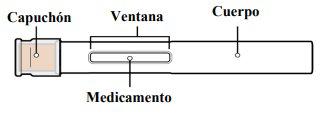
Після використання
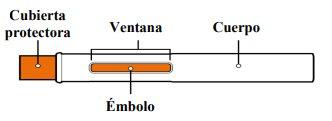
КРОК 1: Підготовьте ін'єкцію
1.1. Підготовьте плоскую та чисту поверхню, таку як стіл або лавка, в добре освітленій зоні. | |
1.2. Вам також знадобиться (не входить до складу) (див. Фігура А):
|
|
1.3. Візьміть з холодильника коробку, що містить ручку. Незберігайте ручку поза холодильником більше 14 днів без використання. | |
1.4. Перевірте термін придатності, вказаний на коробці, щоб переконатися, що він не закінчився (див. Фігура Б). Невикористовуйте ручку, якщо термін придатності закінчився. 1.5. Якщо ви вперше відкриваєте коробку, перевірте, щоб вона не мала жодних ознак пошкодження. |
|
Невикористовуйте ручку, якщо коробка здається пошкодженоюабо була відкрита. | |
1.6. Відкрийте коробку та витягніть ручку одноразового використання. Нетримайте ручку за ковпачок. 1.7. Поверніть ручки, що залишилися в коробці, в холодильник. 1.8. Покладіть ручку на підготовлену поверхню при кімнатній температурі на 45 хвилин перед використанням, щоб лікарський засіб в ручці досяг кімнатної температури (див. Фігура В). Примітка: Якщо ви цього не зробите, ін'єкція може бути незручною та тривалішою. Ненагрівайте жодним іншим способом, наприклад, в мікрохвильовій печі, гарячій воді чи прямих сонячних проміннях. |
|
Незнімайте прозорий ковпачок з ручки до тих пір, поки не будете готові до введення, щоб уникнути травм. Тримайте Тієнне поза зоною дії дітей. |
КРОК 2: Перевірте ручку
2.1. Перевірте, чи не пошкоджена ручка (див. Фігура Г). Невикористовуйте ручку, якщо вона має ознаки пошкодження або впала. |
|
2.2. Перевірте мітку на ручці, щоб переконатися, що:
Невикористовуйте ручку, якщо назва на мітці не є Тієнне або термін придатності закінчився. |
|
2.3. Подивіться на лікарський засіб через вікно. Переконайтеся, що він прозорий та безбарвний до світло-жовтогота не містить лусочок чи частинок (див. Фігура Є). Примітка: Нормально, якщо є пузирці повітря в лікарському засобі. Невводьте, якщо рідина є мутною, забарвленою чи містить грудки чи частинки, оскільки це може бути небезпечно. |
|
КРОК 3: Мийте руки
3.1. Мийте руки водою та мильним засобом і добре висушуйте їх чистим рушником (див. Фігура Ж). |
|
КРОК 4: Виберіть місце ін'єкції
4.1. Якщо ви вводите ін'єкцію самі, ви можете використовувати:
Примітка: Виберіть інше місце для кожної ін'єкції, щоб зменшити червоність, подразнення чи інші шкірні проблеми. Невводьте в больові (чутливі), синякові, червоні, тверді, лущені чи з ураженнями, родимками, шрамами, стріями чи татуюваннями ділянки шкіри. Невикористовуйте ручку через одяг. |
|
КРОК 5: Очистіть місце ін'єкції
5.1. Очистіть шкіру в місці ін'єкції салфеткою, змоченою спиртом (див. Фігура І). Дайте шкірі висохнути. Недуйте чи торкайтеся місця після очистки. |
|
КРОК 6: Введіть ін'єкцію
6.1. Коли ви будете готові до введення, тримайте ручку в одній руці з прозорим ковпачком, зверненим вгору. Іншою рукою потягніть прозорий ковпачок сильно назовні без обертання (див. Фігура Й). Примітка: Використовуйте ручку одразупісля зняття ковпачка, щоб уникнути забруднення. Ненамагайтесь знову накрити голку, навіть після закінчення ін'єкції. Неторкайтеся кришки голки (помаранчевої частини на кінчику ручки), оскільки ви можете випадково поранитися. 6.2. Викиньте прозорий ковпачок. 6.3. Поверніть ручку так, щоб помаранчева кришка голки була звернена вниз. |
|
6.4. Покладіть руку на ручку так, щоб ви могли бачити вікно. 6.5. Покладіть ручку на шкіру під кутом 90 градусів (прямо) (див. Фігура К). Примітка: Щоб переконатися, що ви вводите під шкіру (в жирову тканину), не тримайте ручку під кутом. Примітка: Непотрібно щипати шкіру. |
|
Щоб переконатися, що ви вводите повну дозу, прочитайте всі кроки з 6.6 до 6.9 перед тим, як почати: |
|
6.6. Одним рухом потисніть ручку сильно проти шкіри, поки не почуєте перший клацання. Помаранчевий поршень рухатиметься через вікно під час ін'єкції (це означає, що ін'єкція розпочалася) (див. Фігура Л). |
|
6.7. ЧЕКАЙТЕ та тримайте ручку на місці, поки не почуєте друге клацання. Це може тривати до 10 секунд. ПРОДОВЖУЙТЕ ТРИМАТИ (див. Фігура М). |
|
6.8. ЧЕКАЙТЕ та лічіть повільно до 5 після того, як почуєте друге клацання. ПРОДОВЖУЙТЕ ТРИМАТИ ручку на місці, щоб переконатися, що ви вводите повну дозу (див. Фігура Н). Незнімайте ручку, поки не будете впевнені, що пройшли 5 секунд та ін'єкція завершена. |
|
6.9. Тримаючи ручку на місці, перевірте вікно, щоб переконатися, що помаранчева стрічка поршня з'явилася повністю у вікні та перестала рухатися (див. Фігура О), Примітка: Якщо помаранчева стрічка поршня не з'явилася повністю або якщо ви вважаєте, що не отримали повну ін'єкцію, зверніться до вашого лікаря. Ненамагайтесь повторити ін'єкцію з новою ручкою. |
|
КРОК 7: Видаліть та перевірте ручку
7.1. Після закінчення ін'єкції відокреміть ручку від шкіри (див. Фігура П). Примітка: Кришка голки ковзне вниз та покриє голку. Незнову накривайте ручку. |
|
7.2. Перевірте вікно, щоб переконатися, що помаранчева стрічка поршня з'явилася повністю (див. Фігура Q). Примітка: Якщо помаранчева стрічка поршня не з'явилася повністю або якщо ви вважаєте, що не отримали повну ін'єкцію, зверніться до вашого лікаря. Ненамагайтесь повторити ін'єкцію з новою ручкою. |
|
7.3. Якщо ви бачите кров на місці ін'єкції, потисніть вату чи марлю проти шкіри, поки кров не зупиниться (див. Фігура Р). Нетертіте місце ін'єкції. |
|
КРОК 8: Видаліть ручку
8.1. Покладіть використану ручку в контейнер для колючих предметів одразу після використання (див. Фігура С). Незнову накривайте прозорий ковпачок на ручку. Невикиньте ручку в домашній сміття. Неповторно використовуйте ручку. Якщо у вас немає контейнера для колючих предметів, ви можете використовувати домашній контейнер, який:
Коли контейнер для видалення колючих предметів майже повний, вам потрібно буде слідувати місцевим рекомендаціям щодо правильного видалення контейнера. Невикиньте використаний контейнер для колючих предметів в домашнє сміття, якщо тільки місцеві правила цього не дозволяють. Непереробляйте використаний контейнер для колючих предметів. Завжди тримайте контейнер для колючих предметів поза зоною дії дітей. |
|
КРОК 9: Зазначте ін'єкцію
9.1. Зазначте дату та місце ін'єкції (див. Фігура Т). Примітка: Це допоможе вам пам'ятати, коли та де вам потрібно зробити наступну ін'єкцію. |
|
- Країна реєстрації
- Діючі речовини
- Потрібен рецептТак
- Виробник
- Інформація є довідковою і не є медичною порадою. Перед прийомом будь-яких препаратів обов'язково проконсультуйтеся з лікарем. Oladoctor не несе відповідальності за медичні рішення, прийняті на основі цього контенту.
- Альтернативи до ТІЄННЕ 162 мг РОЗЧИН ДЛЯ ІН'ЄКЦІЙ У ПЕРЕДНАПОВНЕНІЙ ШПРИЦ-РУЧЦІФорма випуску: РОЗЧИН ДЛЯ ІН'ЄКЦІЙ, 162 мгДіючі речовини: tocilizumabВиробник: Celltrion Healthcare Hungary Kft.Потрібен рецептФорма випуску: РОЗЧИН ДЛЯ ІН'ЄКЦІЙ, 162 мгДіючі речовини: tocilizumabВиробник: Celltrion Healthcare Hungary Kft.Потрібен рецептФорма випуску: РОЗЧИН ДЛЯ ІНФУЗІЙ, ЩО ВВОДИТЬСЯ ІН'ЄКЦІЙНО, 20 мг/млДіючі речовини: tocilizumabВиробник: Celltrion Healthcare Hungary Kft.Потрібен рецепт
Аналоги ТІЄННЕ 162 мг РОЗЧИН ДЛЯ ІН'ЄКЦІЙ У ПЕРЕДНАПОВНЕНІЙ ШПРИЦ-РУЧЦІ в інших країнах
Найкращі аналоги з тією самою діючою речовиною та терапевтичним ефектом.
Аналог ТІЄННЕ 162 мг РОЗЧИН ДЛЯ ІН'ЄКЦІЙ У ПЕРЕДНАПОВНЕНІЙ ШПРИЦ-РУЧЦІ у Україна
Лікарі онлайн щодо ТІЄННЕ 162 мг РОЗЧИН ДЛЯ ІН'ЄКЦІЙ У ПЕРЕДНАПОВНЕНІЙ ШПРИЦ-РУЧЦІ
Консультація щодо дозування, побічних ефектів, взаємодій, протипоказань та поновлення рецепта на ТІЄННЕ 162 мг РОЗЧИН ДЛЯ ІН'ЄКЦІЙ У ПЕРЕДНАПОВНЕНІЙ ШПРИЦ-РУЧЦІ – за рішенням лікаря та згідно з місцевими правилами.



